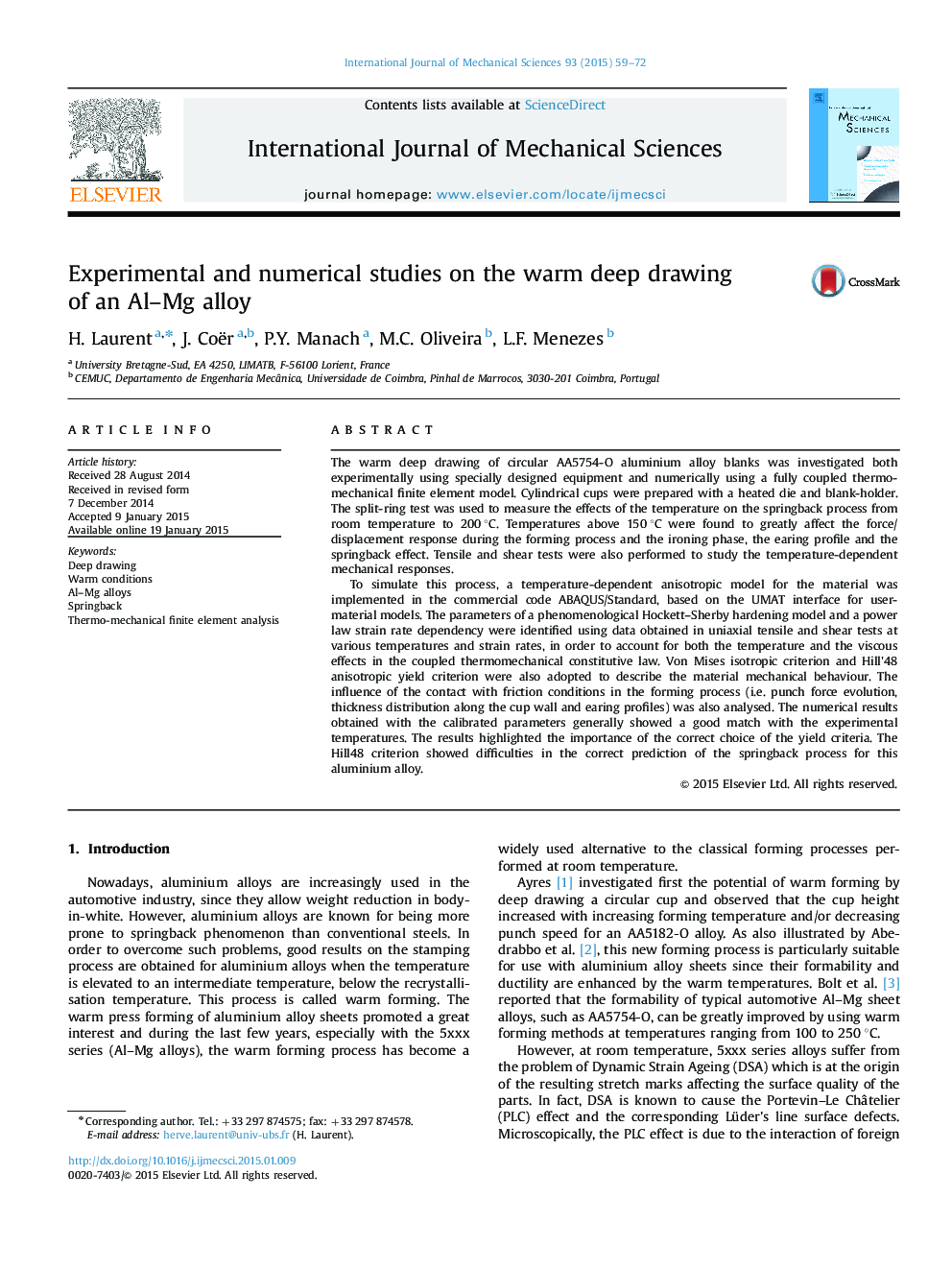| کد مقاله | کد نشریه | سال انتشار | مقاله انگلیسی | نسخه تمام متن |
|---|---|---|---|---|
| 783411 | 1464987 | 2015 | 14 صفحه PDF | دانلود رایگان |
• Warm cylindrical cup forming and springback processes were studied both experimentally and numerically in an AA5754-O alloy.
• The flow stress, PLC effect and strain rate sensitivity were studied in tensile and shear tests depending on the temperature.
• Temperatures greater than 150 °C improved the formability and reduced ironing phase and springback.
• The best combinations of numerical parameters for use in coupled thermo-mechanical finite element models were determined.
The warm deep drawing of circular AA5754-O aluminium alloy blanks was investigated both experimentally using specially designed equipment and numerically using a fully coupled thermo-mechanical finite element model. Cylindrical cups were prepared with a heated die and blank-holder. The split-ring test was used to measure the effects of the temperature on the springback process from room temperature to 200 °C. Temperatures above 150 °C were found to greatly affect the force/displacement response during the forming process and the ironing phase, the earing profile and the springback effect. Tensile and shear tests were also performed to study the temperature-dependent mechanical responses.To simulate this process, a temperature-dependent anisotropic model for the material was implemented in the commercial code ABAQUS/Standard, based on the UMAT interface for user-material models. The parameters of a phenomenological Hockett–Sherby hardening model and a power law strain rate dependency were identified using data obtained in uniaxial tensile and shear tests at various temperatures and strain rates, in order to account for both the temperature and the viscous effects in the coupled thermomechanical constitutive law. Von Mises isotropic criterion and Hill׳48 anisotropic yield criterion were also adopted to describe the material mechanical behaviour. The influence of the contact with friction conditions in the forming process (i.e. punch force evolution, thickness distribution along the cup wall and earing profiles) was also analysed. The numerical results obtained with the calibrated parameters generally showed a good match with the experimental temperatures. The results highlighted the importance of the correct choice of the yield criteria. The Hill48 criterion showed difficulties in the correct prediction of the springback process for this aluminium alloy.
Journal: International Journal of Mechanical Sciences - Volume 93, April 2015, Pages 59–72
